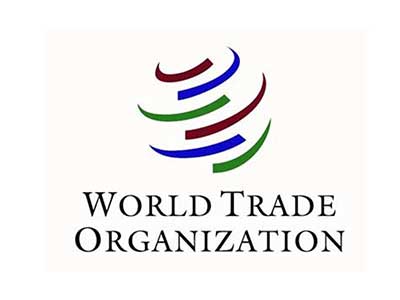Date: 11/05/2023
Relevance: GS-3: Indian Economy and issues relating to Planning, Mobilization of Resources, Growth, Development, and Employment.
Key Phrases: World Trade Organization (WTO) Information Technology Agreement (ITA), first ministerial conference, OECD's Trade in Value Added (TiVA), the Indo-Pacific Economic Framework for Prosperity (IPEF), domestic producers.
Why in News?
- In 1997, India joined the World Trade Organization (WTO) Information Technology Agreement (ITA) and committed to eliminating customs duties on about 200 IT products.
- However, India's experience with the ITA has been most discouraging, with the country's domestic IT industry almost wiped out.
Background of the ITA:
- During the first ministerial conference of the WTO held in Singapore in 1996, a few WTO members concluded the ITA on December 13, 1996.
- Under the agreement, the participants decided not to impose customs duties on about 200 products related to the IT sector.
- The main proponents of the ITA included the European Union (EU), Hong Kong, Japan, Korea, Singapore, Thailand, and the US.
- These countries were either benefiting from royalty flows from sales of branded IT products or had become significant manufacturing hubs in this segment due to foreign investment from developed countries.
India's Decision to Join the ITA:
- While India did not join the ITA at the Singapore ministerial meeting, it appears to have engaged actively in negotiations on this issue.
- India's Commerce Minister said on this issue in the Lok Sabha on December 16, 1996: “India had taken the view that strengthening of the global information technology infrastructure would be generally beneficial and therefore, subject to the interests of domestic producers being adequately safeguarded, India could consider joining the program of phased tariff reductions.”
- However, India's rose-tinted view of ITA changed soon after joining. The DOC website states, "India's experience with the ITA has been most discouraging, which almost wiped out the IT industry from India".
The Dismal Experience with the ITA:
- Flawed Basis of Joining the ITA:
- The primary objective of joining the ITA was to enhance the competitiveness of IT services in India by making hardware imports cheaper.
- However, with the benefit of hindsight, it can be speculated that this decision was flawed.
- Calculations based on OECD's Trade in Value Added (TiVA) database suggest that IT hardware's contribution to the overall value-addition of IT services was minimal.
- For each $100 of IT and telecommunications services sold in India, machinery and equipment, including IT hardware, contributed less than $1 to the final output of IT services and $2 for telecommunication services.
- Impact on Domestic Producers:
- After joining the ITA, India's domestic producers of computers, electronics, and optical products faced a massive hit.
- Their share in total demand for these products in the country dropped from 70% in 1995 to around 45% in 2011.
- This was due to the government signing away the right to impose customs duty on IT hardware, which left it with no effective policy instrument to protect the domestic IT hardware industry.
Missed opportunity:
- If India had not joined the ITA, the government would have retained the option of keeping customs duties low but raising them when the domestic industry was unable to cope with imported IT products.
- This would have been a more useful way of balancing the competing needs of IT services and the IT hardware industry.
- The government officials would not have had the benefit of OECD TiVA while taking the decision to join ITA.
Conclusion:
- Often trade negotiators are called upon to take crucial decisions without having sufficient information.
- It is reasonable to assume that India’s negotiators would be facing this problem in ongoing FTA negotiations with the UK and the EU, as well as in the engagement with the US under the Indo-Pacific Economic Framework for Prosperity (IPEF).
- In particular, it may be difficult for the negotiators to envisage the interventions which the government might be required to make in the future in sectors with fast-changing technology.
- A useful rule of thumb should be to choose an option that preserves the policy flexibility of the government to support its domestic producers to the maximum possible extent.
- Being deprived of policy tools through trade agreements for supporting domestic producers, especially in new and emerging areas, can come to haunt India.
- In its ongoing trade engagements, the country can ill-afford to repeat the mistake made in the context of ITA.
Source: The Hindu BL
Mains Question:
Q. Critically examine India's decision to join the WTO Information Technology Agreement (ITA) in 1997 and the impact of this decision on India's IT hardware industry.







